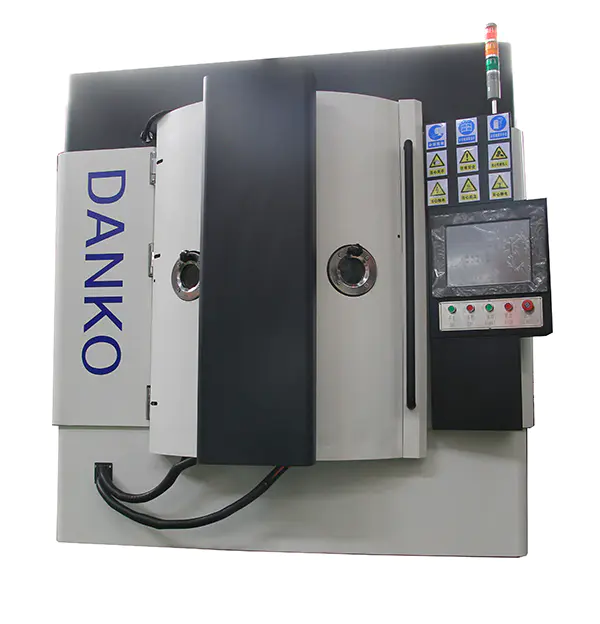Summary:First, the formation of target metal compounds
In the process of forming the compound from the meta...
First, the formation of target metal compounds
In the process of forming the compound from the metal target surface through the reactive sputtering process, where is the compound formed? Because the reactive gas particles collide with the atoms on the target surface to generate a chemical reaction to generate compound atoms, usually an exothermic reaction, the reaction generates heat There must be a way for conduction out, otherwise the chemical reaction cannot proceed. Heat transfer between gases is impossible under a vacuum, so chemical reactions must take place on a solid surface. Reactive sputtering products are performed on target surfaces, substrate surfaces, and other structured surfaces. Generating compounds on the substrate surface is our goal. Generating compounds on other surfaces is a waste of resources. Generating compounds on the target surface was initially a source of compound atoms, but later became an obstacle to continuously supplying more compound atoms.
Second, the influencing factors of target poisoning
The main factor affecting target poisoning is the ratio of reactive gas to sputtering gas. Excessive reactive gas will lead to target poisoning. During the reactive sputtering process, the sputtering channel region on the target surface is covered by the reaction product of the reaction product is peeled off to re-exposed the metal surface. If the rate of compound formation is greater than the rate at which the compound is stripped, the area covered by the compound increases. In the case of a certain power, the amount of reaction gas participating in the formation of the compound increases, and the compound formation rate increases. If the amount of reactive gas increases excessively, the area covered by the compound increases. If the flow rate of the reactive gas cannot be adjusted in time, the rate of increase in the area covered by the compound cannot be suppressed, and the sputtering channel will be further covered by the compound. When the sputtering target is completely covered by the compound When the target is completely poisoned.
Third, the phenomenon of target poisoning
(1) Positive ion accumulation: When the target is poisoned, an insulating film is formed on the target surface. When positive ions reach the cathode target surface, due to the blocking of the insulating layer, they cannot directly enter the cathode target surface but accumulate on the target surface, which is prone to cold field. Arc Discharge—Arc strikes that prevent sputtering from proceeding.
(2) Anode disappears: When the target is poisoned, an insulating film is also deposited on the wall of the grounded vacuum chamber, and the electrons reaching the anode cannot enter the anode, resulting in the disappearance of the anode.
Fourth, the physical explanation of target poisoning
(1) In general, the secondary electron emission coefficient of metal compounds is higher than that of metals. After the target is poisoned, the surface of the target is covered with metal compounds. After being bombarded by ions, the number of secondary electrons released increases, which improves the space efficiency. Conductivity, reducing plasma impedance, resulting in lower sputtering voltage. Thus, the sputtering rate is reduced. In general, the sputtering voltage of magnetron sputtering is between 400V and 600V. When target poisoning occurs, the sputtering voltage will be significantly reduced.
(2) The sputtering rate of metal target and the compound target is different. Generally, the sputtering coefficient of metal is higher than that of the compound, so the sputtering rate is low after the target is poisoned.
(3) The sputtering efficiency of a reactive sputtering gas is inherently lower than that of inert gas, so when the proportion of reactive gas increases, the overall sputtering rate decreases.
Fifth, the solution to target poisoning
(1) Use an intermediate frequency power supply or radio frequency power supply.
(2) A closed-loop control of the inflow of the reaction gas is adopted.
(3) Using twin targets
(4) Control the change of the coating mode: Before
coating, collect the hysteresis effect curve of the target poisoning, so that the intake airflow is controlled at the front of the target poisoning, so as to ensure that the process is always in the mode before the deposition rate drops sharply.

